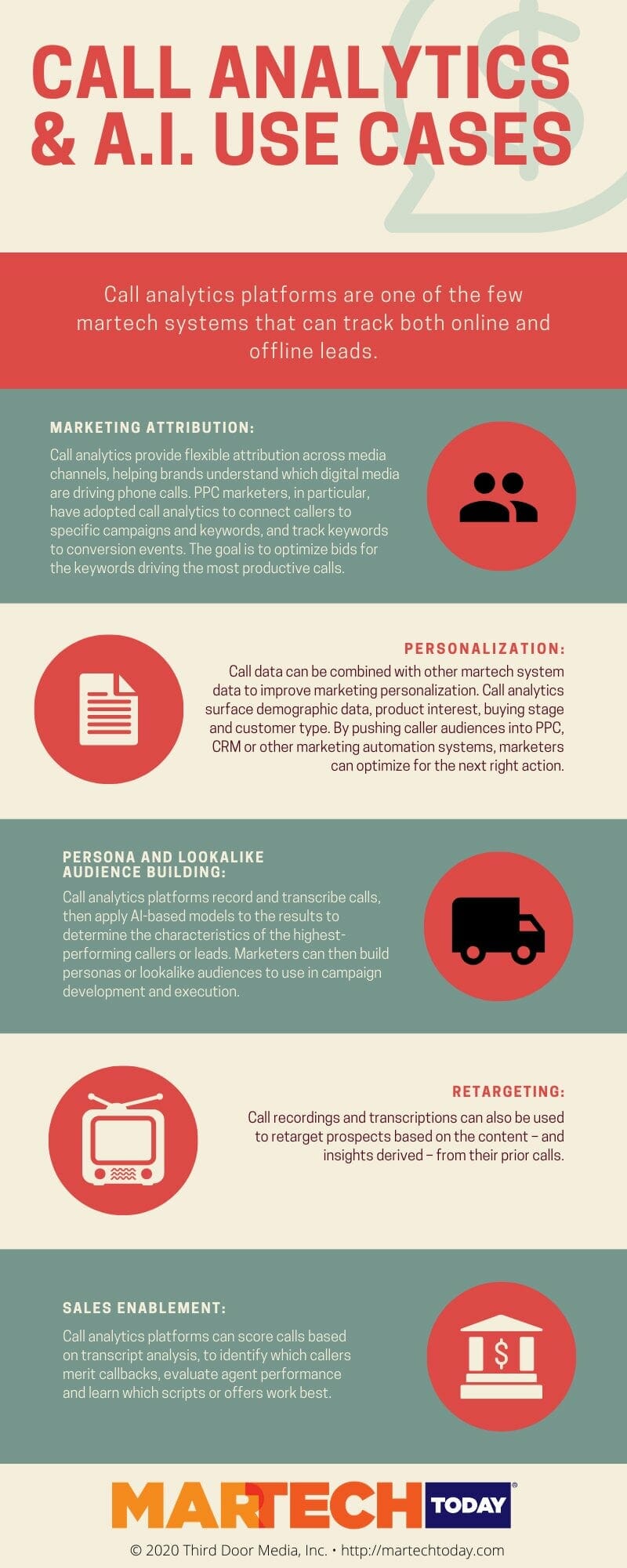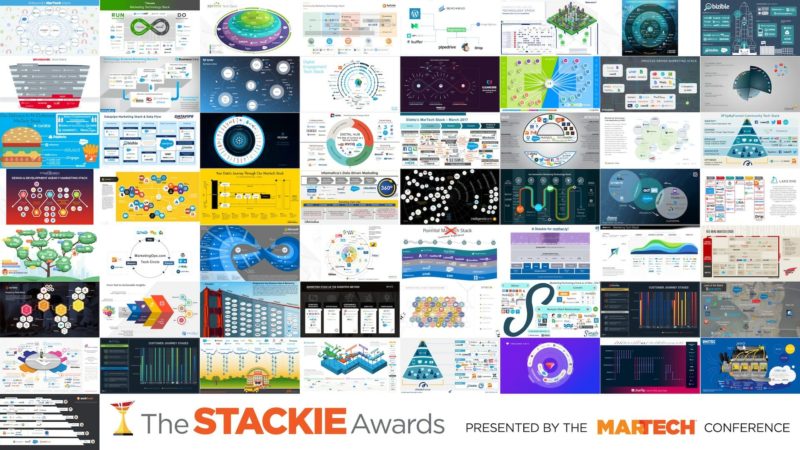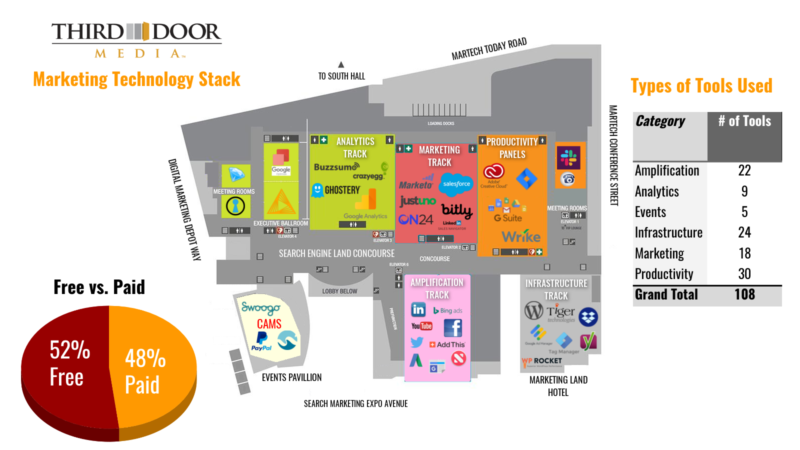The post Virtual Events Part 3: Choosing the right martech appeared first on MarTech.
]]>In the early days of martech, debate raged whether deploying an all-in-one platform or assembling a “stack” of best-of-breed applications yielded the best results.
That’s the choice facing virtual event producers now, and the benefits and pitfalls of each approach apply to virtual event production as well.
What are you trying to accomplish? Define the objectives and requirements upfront
As with any martech choice, the answer to “platform or stack?” depends on what you are trying to accomplish. Start by defining your objectives. Are you producing a tradeshow with lots of sponsors, and therefore attendee/sponsor interaction is the goal? Is it a training course, where learning is the key benefit? Or is attendee-to-attendee networking the root of the value that will provide? Answering these questions (and many others) will guide the decisions you make.
If, for example, you are planning for a large event, with thousands of attendees and presentations, being mindful of scale is important because you’ll need a high-performance platform that can handle a large number of participants simultaneously. If, on the other hand, your event will have limited attendance and features pre-recorded content, or it’s a mixed scenario with live and on-demand content, you face a completely different set of challenges.
The implications of your business model or desired event experience can’t be overstated. There is no one-size-fits-all solution. You’ll have to dig in to find the right solution. Start with the three “Ds”:
- Document the required features;
- Define use cases for key stakeholders;
- Determine the budget.
In addition to the objectives, you need to define requirements, a list of features you expect to have for attendees, sponsors and your team. Making a detailed list will get you started on the right path and save you a ton of time in the long run. You’ll avoid pointless conversations with the hundreds of vendors now vying for your virtual event business.
Your requirements should start with ideas about what kind of experience your attendees expect, including an easy registration form that is mobile-friendly. Will you be charging for registration? If so, how does the registration system handle payments (and refunds!) Are there multiple ticket types? Will the event be live, pre-recorded, or a mix of both? How will attendees connect with each other? What benefits do sponsors get? How will you measure activity, engagement, and ultimately the success of the event?
Make certain your requirements take into account the business model of your event. For example, if your event is free for attendees, and sponsors will pay the freight, you’ll skew your requirements to sponsor needs such as branding, reporting, and support. Likewise, if your event model relies on matchmaking or 1:1 meetings, you’ll need to flesh out your meeting requirements. Whenever possible, involve key constituents — attendees, sponsors and especially your team — in decisions. You’ll earn much needed buy-in during the process, which is vital for the success of any martech project.
All-in-one virtual event platforms provide a standard set of features. You’ll love some of them. Loathe some of them. And ignore others.
Depending upon the capabilities of your team, choosing an all-in-one platform may be wise in order to impose structure, particularly in workflow. You’ll inherit a defined way of doing things and the support of the vendor’s client services team including onboarding and training.
The alternative to an all-in-one platform is an event “stack.” A stack will be comprised of tools that deliver the same or more functionality as a platform, but with the benefit of allowing you to swap out or add in elements as needed.
An event stack approach gives you the flexibility to integrate cutting edge technologies and features, and is generally less expensive than using an all-in-one platform.
So what are the drawbacks of a stack? You’ll be sourcing elements from different vendors, and need to connect them all in order to provide a seamless experience for users and aggregate data for sponsors and your own use. You’ll also be on your own; stacks don’t come with client success organizations to support your efforts.

Avengers (er, stack), assemble!
Assembling your own event stack means taking ownership over things such as managing disparate registration and content management systems and landing pages, video hosting, and other widgets and tools. You’ll want to lean heavily on your requirements document and stick to what matters (you didn’t skip this step, did you?). Do you need surveys and polls, or are those just things that feel good to have but that you don’t use in your event? Do you have a lot of sponsors, or no sponsors? That will impact your reporting needs. Is there live Q&A during sessions, or will that happen in a Slack channel, or in a private Facebook group?
Building or assembling a stack can sound exciting because of the flexibility it offers and potentially less expensive. But assembly comes with its own set of drawbacks and caveats. For example, if you don’t have a technically capable or curious team, it can be overwhelming to try to connect all the dots between different solutions. A well-designed event stack will have more moving pieces than an all-in-one event platform. You’ll have to manage multiple vendors and won’t have a single source of support.
While the idea of having everything in an all-in-one solution sounds comforting, it can also be extremely limiting. In this virtual, digital environment, where innovation is happening as quickly as customer expectations, locking yourself into a single platform contract could have some significant drawbacks in terms of your ability to be agile and flexible and to create the ideal experience for your customers.
If you intend to explore the event stack route, I recommend you get clear on your core requirements and match them directly to your business model. Identify who on your team can handle integrations and prepare everyone so they understand the benefits of building a stack, and how it changes everything from the front-end user experience to the way they manage events.
So what’s the better approach: all-in-one or stack? It depends. You can only answer the question by taking the time to understand your requirements, budget, and the experience you want to deliver.
Always searching.
The post Virtual Events Part 3: Choosing the right martech appeared first on MarTech.
]]>The post Are you effectively monetizing, measuring and maximizing your inbound call volume? appeared first on MarTech.
]]>
Marketers are using call analytics platforms to identify the rich data and consumer insights hidden in the growing volume of inbound calls. Call analytics platforms are one of the few martech systems that can track both online and offline leads.
Call tracking – following a call from source (e.g. website, click-to-call search or display ad) to sales representative (e.g. based on geographic location or product line) – has been a core use case. However, call analytics platforms now work for a number of marketing use cases:

If you are considering an enterprise call analytics platform, this report will help you decide whether or not you need one. MarTech Today’s “Enterprise Call Analytics Platforms: A Marketer’s Guide” examines the market for call analytics platforms and the considerations involved in implementation. The 48-page report, which has been downloaded more than 2,000 times, reviews the growing market for call analytics platforms, plus the latest trends, opportunities and challenges.
Also included in the report are profiles of 13 leading enterprise call analytics vendors, capabilities comparisons and recommended steps for evaluating and purchasing.
The post Are you effectively monetizing, measuring and maximizing your inbound call volume? appeared first on MarTech.
]]>The post Pick up the phone, Neo. Why Call Analytics Is One of the Most Underrated Marketing Strategies. appeared first on MarTech.
]]>
With the explosion of digital marketing, and attribution, the phone is often relegated to second class status. But research suggests that 60 percent of US consumers prefer to contact a business by phone after finding them online – compared to just 16 percent who prefer email and 15 percent who prefer to visit the business location. Without a call analytics platform, optimizing campaigns across channels, allocating budget, and driving revenue are difficult, or impossible.
And because of the explosion in mobile (and mobile calling) getting a handle on tracking, analyzing and monetizing inbound phone calls is a marketing imperative that needs to be an integral part of your revenue strategy.
If you are considering an enterprise call analytics platform, this report will help you decide whether or not you need one. MarTech Today’s “Enterprise Call Analytics Platforms: A Marketer’s Guide” examines the market for call analytics platforms and the considerations involved in implementation. The 48-page report, which has been downloaded more than 2,000 times, reviews the growing market for call analytics platforms, plus the latest trends, opportunities and challenges.
Also included in the report are profiles of 13 leading enterprise call analytics vendors, capabilities comparisons and recommended steps for evaluating and purchasing.
The post Pick up the phone, Neo. Why Call Analytics Is One of the Most Underrated Marketing Strategies. appeared first on MarTech.
]]>The post Soapbox: Does COVID-19 change everything? appeared first on MarTech.
]]>I’m seeing a lot of people post on social media about how COVID-19 changes everything. I know I’m not alone wondering what will be left with when the virus finally subsides. Will life return to what it was? Will everything be normal again? Will my retirement fund bounce back? I wish I knew.
But what if those are the wrong questions to be asking right now? After all, wasn’t business already moving at lightning speed? What happened to AI and blockchain upending and disrupting everything from healthcare to advertising? Ah yes, those were simpler times.
In order to orient myself, I’ve asked a lot of smart people to help me answer this question. However, the answer I’m getting most often is: “I can’t think about that right now.”
I don’t blame them. The change ahead feels overwhelming and scary even for those of us who embrace innovation and change.
But this is also an important time to take stock both personally, and professionally, about how business will be reshaped in the short and long term. Not just marketing.
Short term, the cards will fall where they may. Unemployment will spike (it already has). Companies will fail or falter (they already are). Things will be nuts for a while (we all feel it, don’t we?). And the constantly changing situation has us running in circles trying to find ways to make our work (if we are still employed) relevant in these times of uncertainty.
My question is more long term. Will people return to their old patterns, or has everything indeed, changed? Will industry rebound? Will my e-mail marketing trigger campaigns once again earn 50%+ open rates? Will we ever shake hands again?
John F. Kennedy once said: “When written in Chinese, the word ‘crisis’ is composed of two characters. One represents danger and the other represents opportunity.” (危机)
Take a moment to recognize we’re in crisis. You are allowed. We all are.
But take note of the opportunity facing you because regardless of how “everything will change” or not, what you do in the next day, week, and months to come will define your future.
Crisis or opportunity – you choose.
Instead of watching Netflix and pondering our demise, let’s bounce some ideas off each other on LinkedIn and talk about what’s going on to help each other.
The post Soapbox: Does COVID-19 change everything? appeared first on MarTech.
]]>The post Share Your Martech Stack and Support Girls Who Code appeared first on MarTech.
]]>Here are five reasons why you should visualize your martech stack:
- You’ll spot redundant or outdated tools and technologies.
- Filling in integrations and connection points will highlight gaps in your marketing flow and potential issues within your customer journey.
- It’s a terrific collaborative exercise: You’ll talk to folks outside your department — always a good idea with side benefits!
- It helps onboarding new hires and consultants.
- It will help your marketing teams understand your stack and integrations, and enable them to step back to see your stack from a different perspective.
Another great reason to visualize your stack? So you can enter it in the 2020 Stackie Awards!
The Stackies celebrate the intricacies of marketing stacks from organizations across the planet. Over the past five years, we have seen some amazing submissions, which we publish, ungated, so the entire community can learn from them.
It’s your turn to share your stack and educate the community!
- Create a 16:9 slide that illustrates the way you conceptualize your marketing stack — the different tools you use and how you think about the way they fit together.
- Upload your slide before midnight PST on Friday, March 20, 2020. Use this link to submit your entry.
- There’s no cost to enter. In fact, for every qualified entry (i.e., a meaningful stack slide), we will donate $100 to Girls Who Code, up to a total of $10,000!
Use these templates and tools to help you get started!
 I want so badly for you to submit your stack, I’ve turned our own spreadsheet into a template to jumpstart your journey. Download it here. We also partnered with CabinetM (check out their video tutorial), Martechbase, and MartechGuru to give you access to their visualization and management tools — use them and you’ll also score 15% off your MarTech registration! Of course, if you prefer a D-I-Y approach, have at it! Check out past winners to soak up some Stackie inspiration. We can’t wait to see what you create.
I want so badly for you to submit your stack, I’ve turned our own spreadsheet into a template to jumpstart your journey. Download it here. We also partnered with CabinetM (check out their video tutorial), Martechbase, and MartechGuru to give you access to their visualization and management tools — use them and you’ll also score 15% off your MarTech registration! Of course, if you prefer a D-I-Y approach, have at it! Check out past winners to soak up some Stackie inspiration. We can’t wait to see what you create.
We’ll publish the deck of all stacks and host a celebratory awards ceremony during the opening reception of The MarTech Conference in San Jose on April 15. Five entries that our judges deem as particularly “outstanding” will be awarded trophies.
One final note: The Stackies isn’t a graphic design contest. It’s about sharing your thinking, collaborating with the community and understanding how your marketing technologies help you deliver a great customer experience. So have fun with it!

The post Share Your Martech Stack and Support Girls Who Code appeared first on MarTech.
]]>The post Inside look: Third Door Media’s marketing technology stack appeared first on MarTech.
]]>While many of these companies have generously shared their information, many more have not. I suspect that some marketers feel as if sharing their stacks may inadvertently reveal trade secrets, proprietary info, or some secret sauce about their operations. Or perhaps that management wouldn’t approve of such transparency. I totally get that.
In fact, after serving last year as a judge for the Stackies, I started a conversation internally about presenting Third Door Media’s stack as a way to share and contribute to the community. It felt awkward and uncomfortable for many of us. What would our sponsors think? Would we get inundated with sales calls from the rest of the marketing landscape? Would we look like amateurs?
Ultimately, we agreed that sharing our stack was the price to pay for being a part of this incredible martech community. In this post, I’ll not only reveal our marketing stack, I’ll outline the process we used to document and design it, along with some important lessons we learned along the way.
Some context about our organization may help you understand our stack: Third Door Media was founded in 2007. It’s an all virtual company with about 40 full-time employees and a handful of contractors. We produce two event series (The MarTech Conference and Search Marketing Expo), publish 3 editorial websites (MarketingLand, MarTech Today, and SearchEngineLand) and offer lead-generation services.
Part I: Build a list of technologies
Graphically representing a marketing technology stack is about much more than just flashy graphic design skills and creative thinking. The point of the exercise is to understand what you already have in place and to look ahead at your business goals, developing a roadmap for the future. What works? What doesn’t? Do all the tools connect and support marketing efforts, or are they presenting roadblocks?
The reality for us is that we didn’t deliberately build our stack from the ground up. It happened organically over a number of years. I suspect that’s true for many organizations (and, perhaps, a little embarrassing). As you’ll see, one of the useful outcomes of this exercise has been the realization and recognition of this fact — and the explicit need for better strategic thinking relating to marketing tools and technologies.
In any event, our first step was to catalog all the different tools being used across the organization. We created a shared spreadsheet and started documenting, and documenting, and documenting. Working with my Director of Marketing Operations, we noted for each technology the core use cases, which departments were involved, who owned each tool, and if it was free or paid. Halfway through, we started to realize that a lot of the tools had been retired or were not in use, so we added an active/inactive column.
Part II: Develop a set of categories and organize the list
As our list grew to more than 100 tools (yes, that’s… gulp… 2.5 per employee), it became clear we needed to add some categorization, which initially included amplification, analytics, events, marketing, and productivity tools. We added the final category, infrastructure, because of some recent work we’ve done to speed up all of our sites. It struck me that even tools like our caching plugin and WordPress needed a home in our stack.
But because I hadn’t seen many other stacks include infrastructure, I reached out to Scott Brinker to confirm that he agreed that including it was a good idea. His reply validated my thinking:
“The fact that many haven’t [included infrastructure] is a good example of the kind of ‘take it for granted’ blind spots we have across these stacks that truly have incredible depth and breadth when you start digging into them.”
Amen, Scott!
Our final category list and descriptions looked like this:
- Amplification (tools that help us get our content out to readers, subscribers, customers, etc.)
- Analytics (tools that measure stuff)
- Events (tools that help us run our events like SMX and MarTech, as well as webinars)
- Infrastructure (web hosting, content management systems, and other underlying technologies)
- Marketing (marketing automation, URL shorteners, email optimization tools, etc.)
- Productivity (anything related to project management, QA, contracts, etc).
Part III: Arts and Crafts Time
Once we had the list, it was time to get our design on. We played around with a few different ideas, but given conference heritage, the answer seemed obvious… a convention center floor plan! And I thought… since we’ve run more shows at the San Jose Convention Center than any venue, why not that one?
So, without further ado, here’s the Third Door Media “Marketing Technology Stack” as of February 2019!

While analogies are useful, they are also ultimately limited. Each category here is represented as tracks, panels, or pavilions. The surrounding roads and concourses are our event brands SMX and MarTech, and our publications Search Engine Land, Marketing Land, MarTech Today, and Digital Marketing Depot.
It’s also worth noting (and obvious) that I didn’t include all 108 technologies on the floorplan. I’ll leave the super tiny logos to Scott and his annual marketing technology landscape.
Lessons learned
First, it’s clear to me that small business marketing technology stacks are not inherently different than large organization ones. While it’s super fun (and surprisingly time-consuming!) to drop tiny logos onto a graphic, what’s important is that you are delivering a great user experience to your prospects, customers, and clientele. (And yes, we often note that running the MarTech Conference is like painting a bull’s eye on your chest when it comes to CX, design and customer service!)
The second lesson is that our stack (and yours, too!) will change…frequently. While there are a number of “core technologies” that drive the bulk of our marketing activities, it’s important to note and manage the constellation of complementary tools that our teams need to do their jobs. Every day it seems as if there are new tools with new capabilities to try. As an example, just last week we started testing a variety of email deliverability tools and some additional lead gen platforms. The reality is that a marketing technology stack is a living, breathing organism, not a static wall-chart or dry audit or assessment.
Finally, we learned that we need to be much more deliberate in thinking about how to connect the dots inside our organization. This exercise revealed both the strength of our stack and the weaknesses. But now that we have a visual representation, we can continue to discuss how we’ll use marketing technology to achieve our goals.
Your Turn!
I hope my description has inspired you to consider creating your own Stackie. And if you do, share it with the marketing technology and operation clan by entering it in this year’s Stackie Awards.
There are no hard and fast rules on how to show your visualization. Illustrate your stack as a value chain, a technical architecture, a customer journey map, a process flow diagram, a market strategy, a capabilities matrix or any original view of how marketing technology is orchestrated in your organization.
Submit your stack before 11:59 pm Friday, Mar. 15 PST. Instead of charging an entry fee, the MarTech conference will donate $100 to non-profit organization Girls Who Code, up to a grand total of $10,000, for every valid Stackies submission.
There will also be a ceremony at MarTech in San Jose in April to celebrate everyone who participated — and award trophies to the five best entries.
So… what are you waiting for? There is still time to design (or update) your marketing tech stack and submit to win a Stackie!
The post Inside look: Third Door Media’s marketing technology stack appeared first on MarTech.
]]>